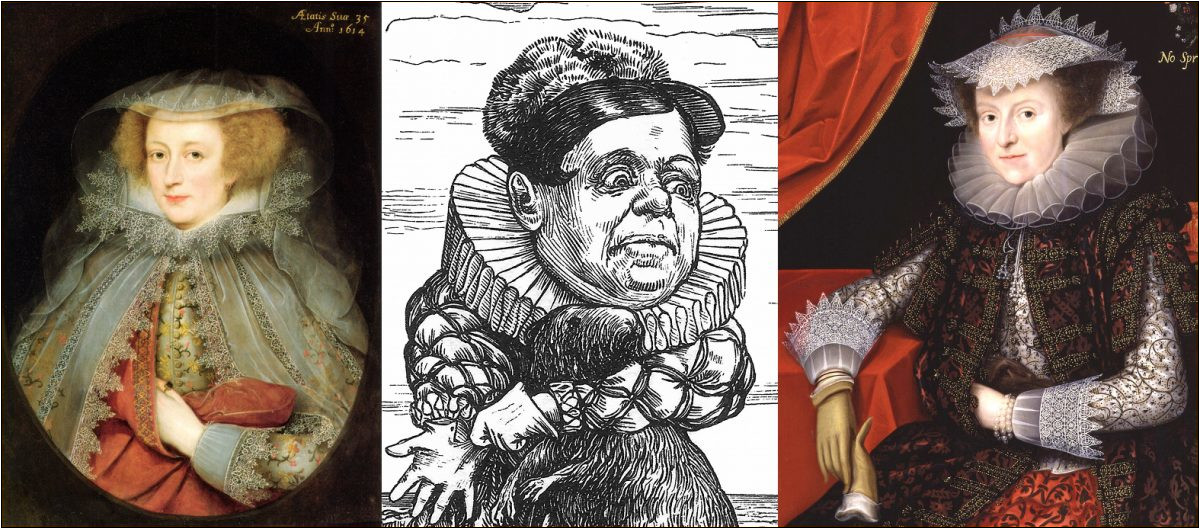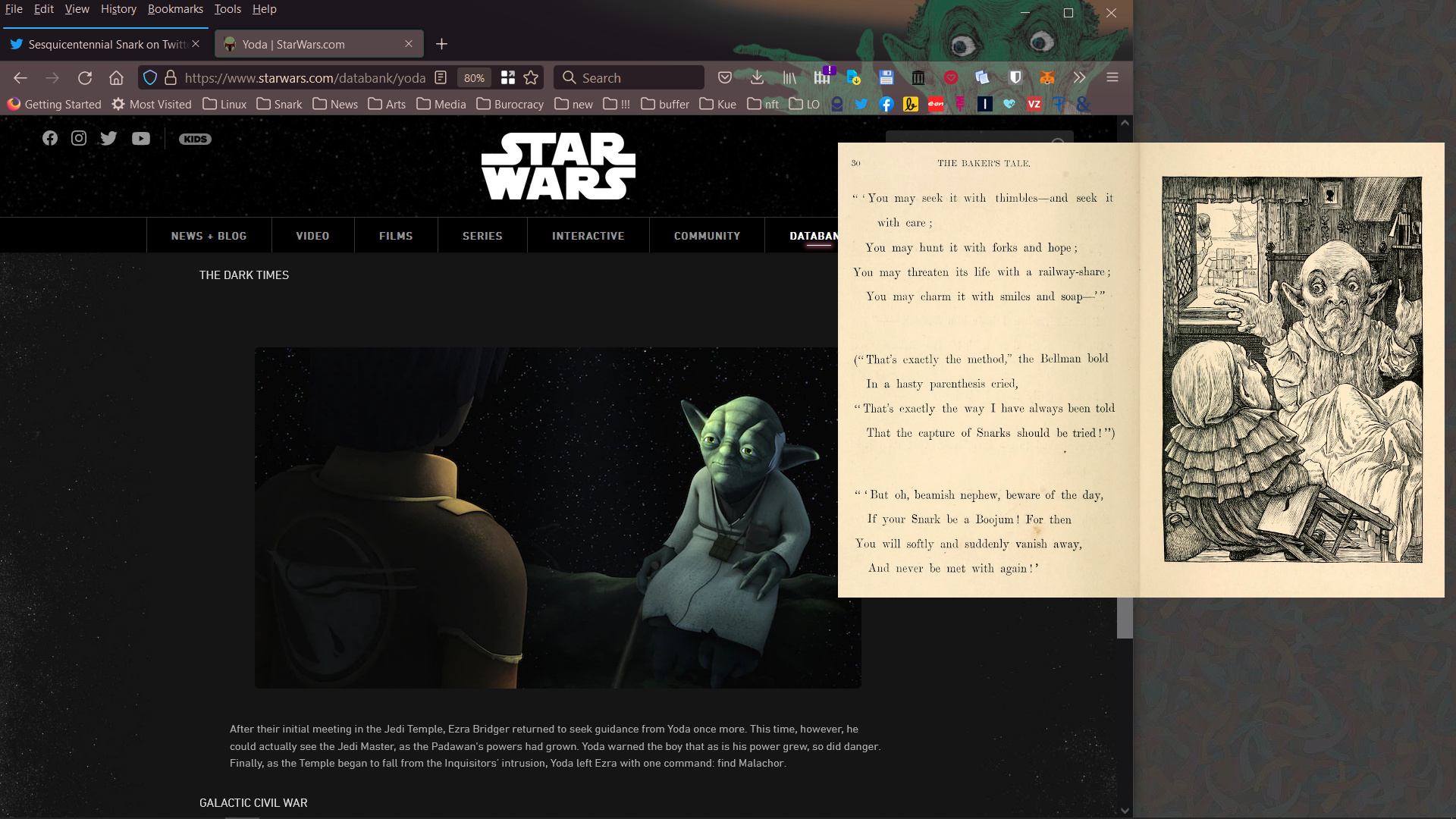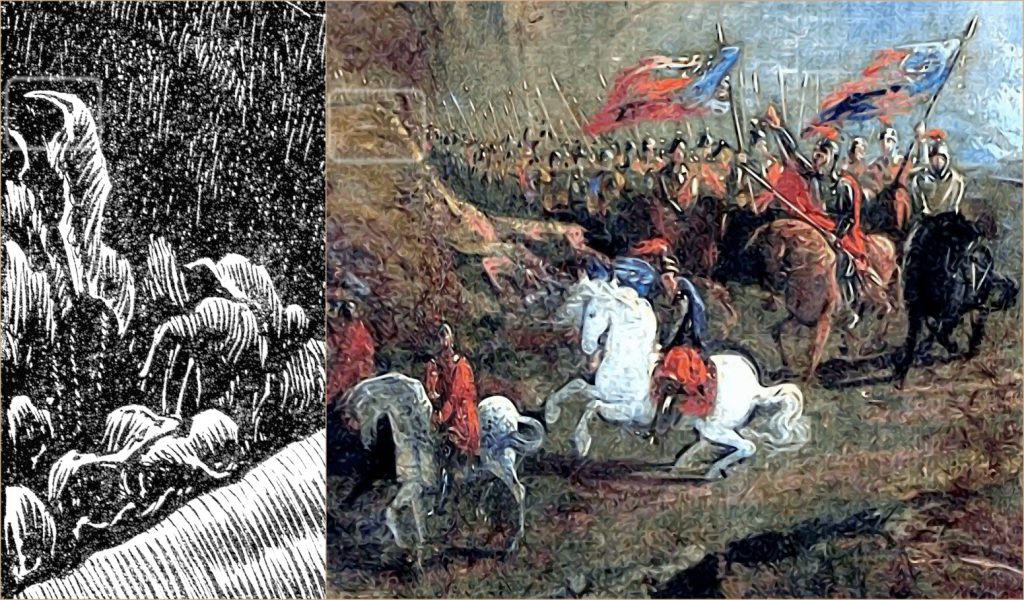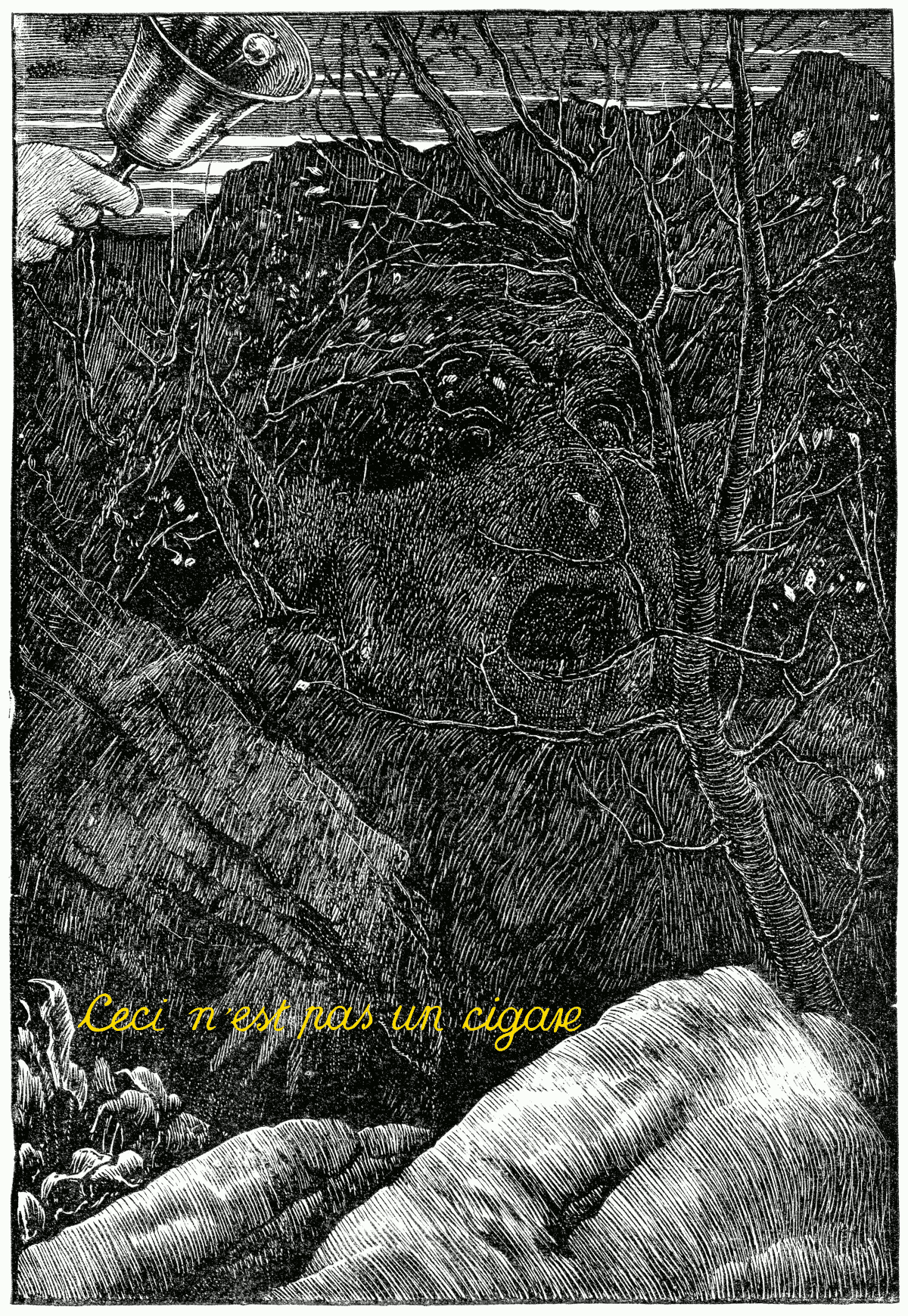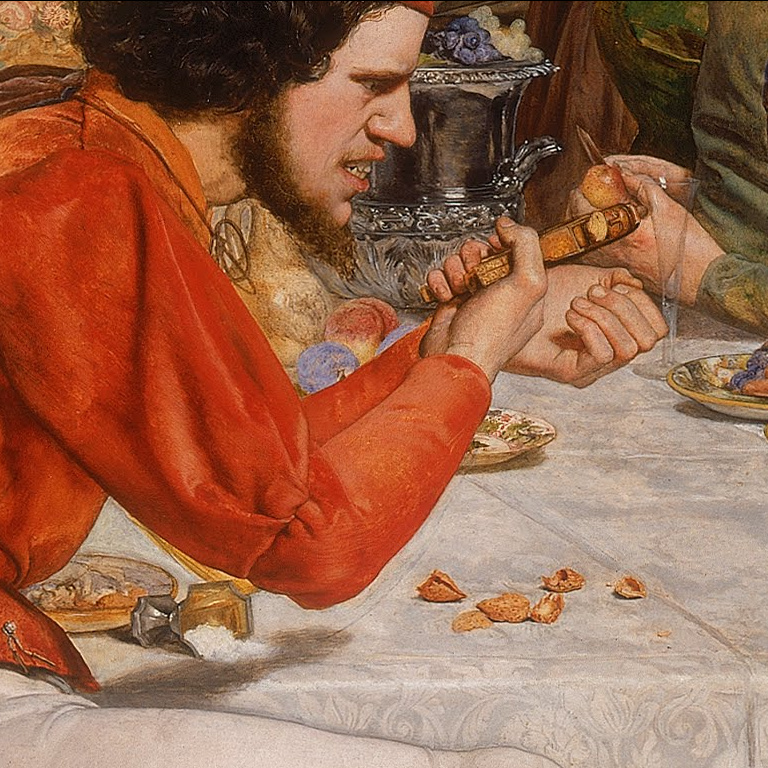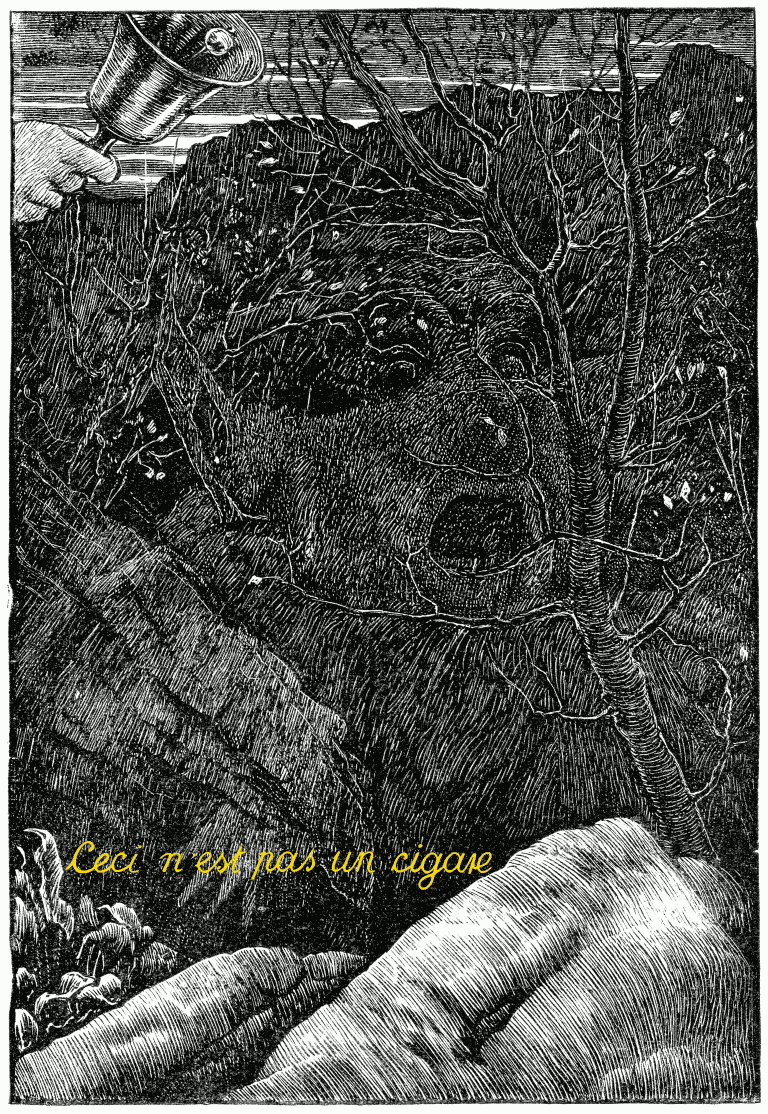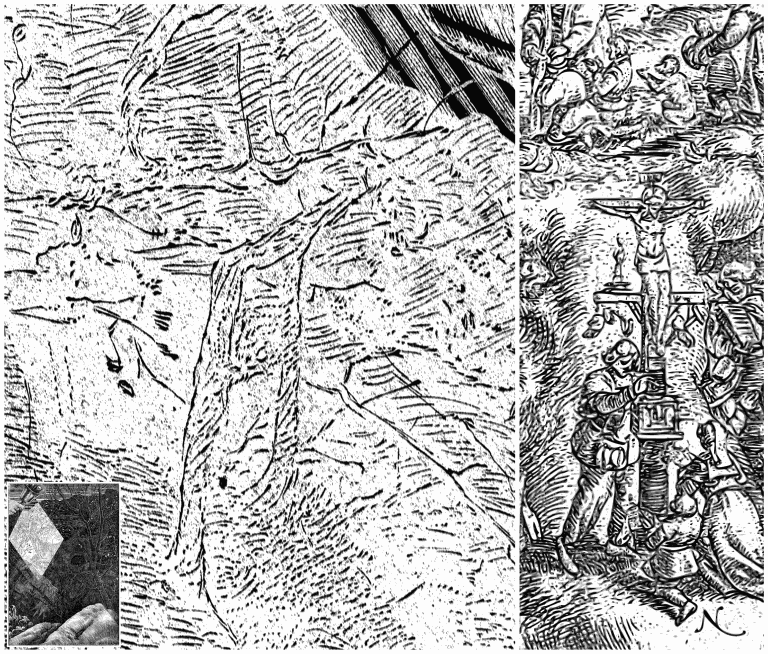One of the surest tests [of a poet’s superiority or inferiority] is the way in which a poet borrows. Immature poets imitate; mature poets steal; bad poets deface what they take, and good poets make it into something better, or at least something different. The good poet welds his theft into a whole of feeling which is unique, utterly different than that from which it is torn; the bad poet throws it into something which has no cohesion. A good poet will usually borrow from authors remote in time, or alien in language, or diverse in interest.
T. S. Eliot, p. 114 in The Sacred Wood: Essays on Poetry and Criticism, 1920
Likewise, a good illustrator welds the theft into a whole of feeling which is unique, utterly different and sometimes even funnier than that from which it is torn.
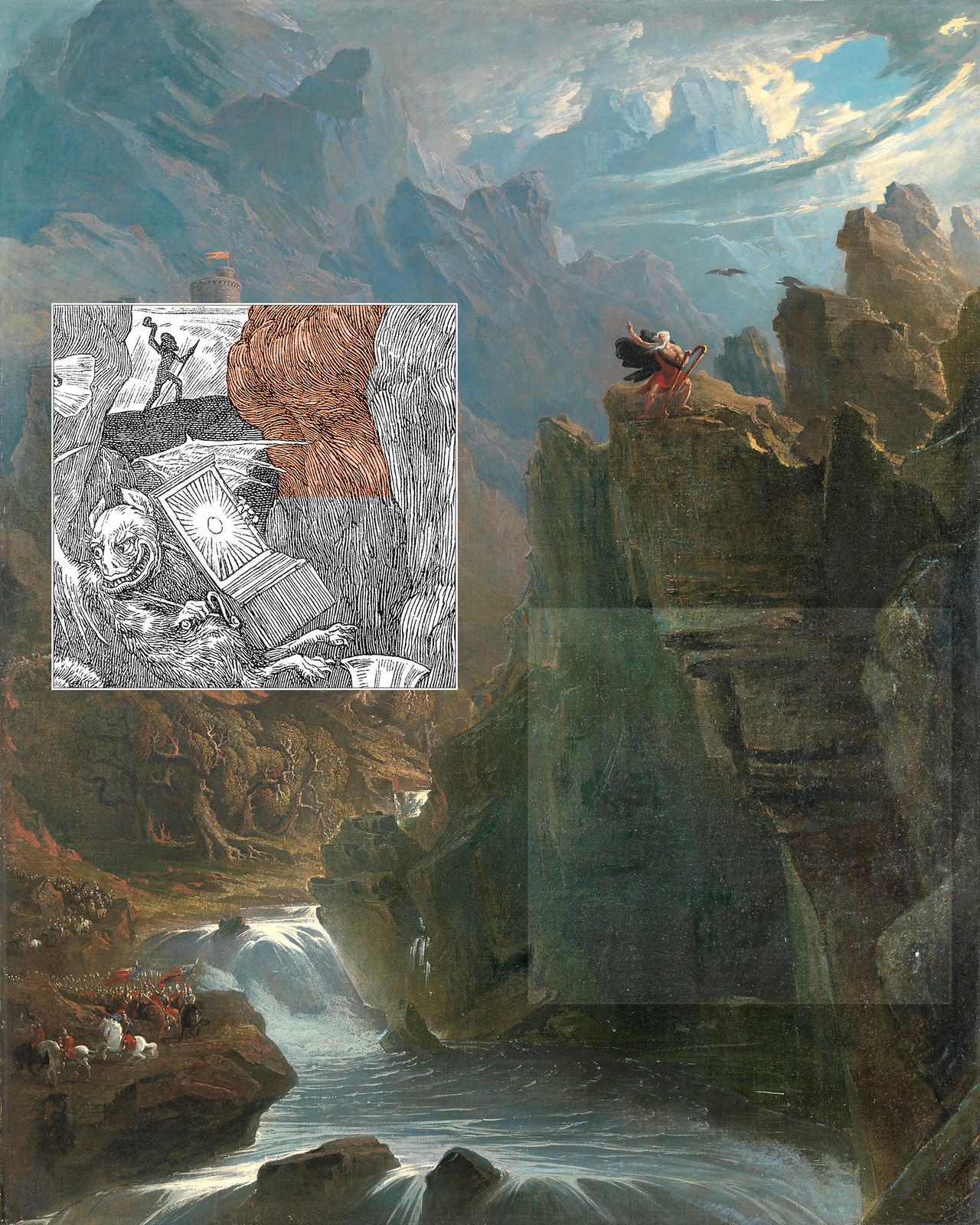
- Main image: John Martin’s painting The Bard (c. 1817).
- Inset: From a segment of an illustration (1876) by Henry Holiday to the chapter The Beaver’s Lesson in Lewis Carroll’s The Hunting of the Snark.
And Lewis Carroll may have borrowed from Thomas Gray.
All art is infested by other art.
(Leo Steinberg, in Art about Art, 1979)
Gustave Doré was an inspired master thief too: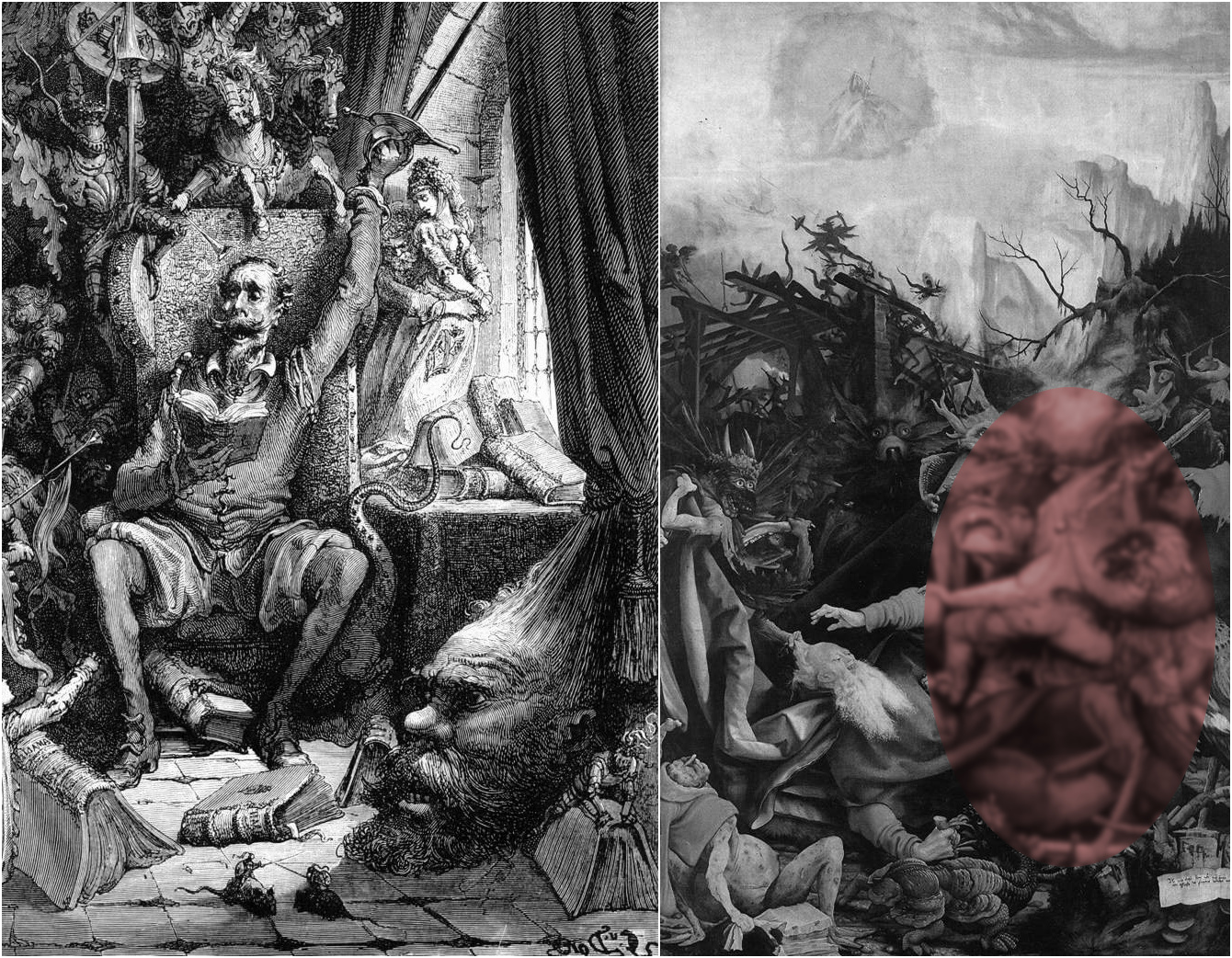 Segments from:
Segments from:
※ Plate I (mirror view) of Gustave Doré’s illustrations to Miguel de Cervantes’ Don Quixote (1863),
※ Matthias Grünewald’s Temptation of St Anthony (c. between 1512 and 1516, a panel of the Isenheim Altarpiece, now located at Musée Unterlinden, Colmar, France).
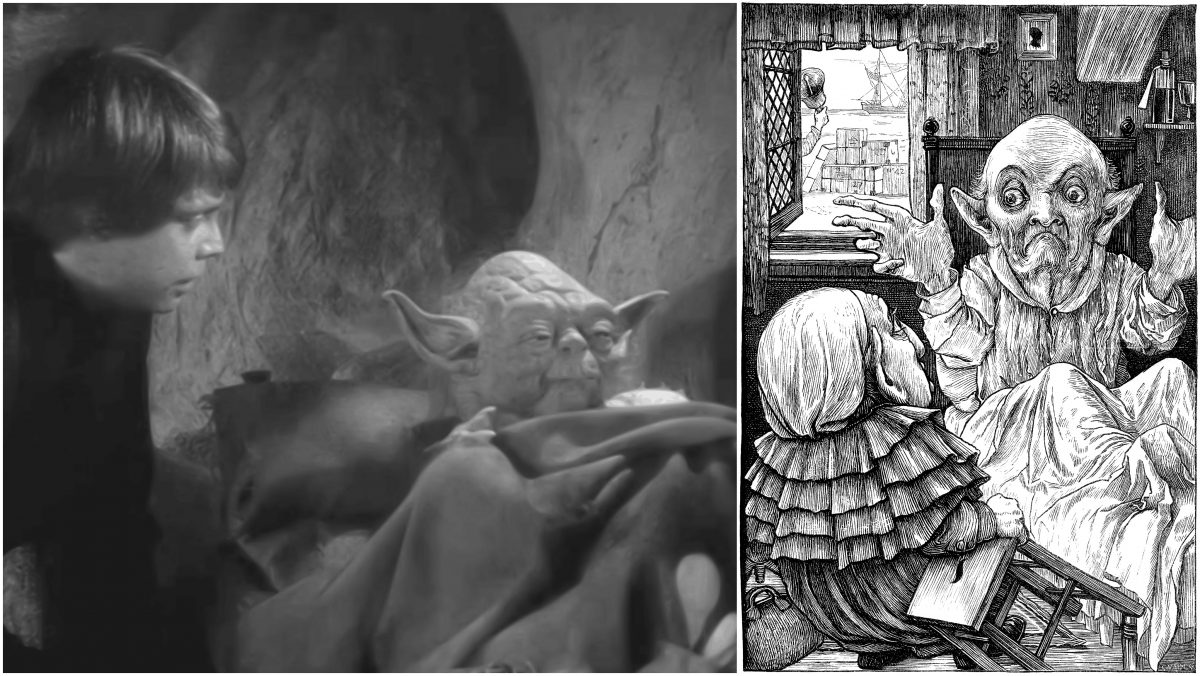
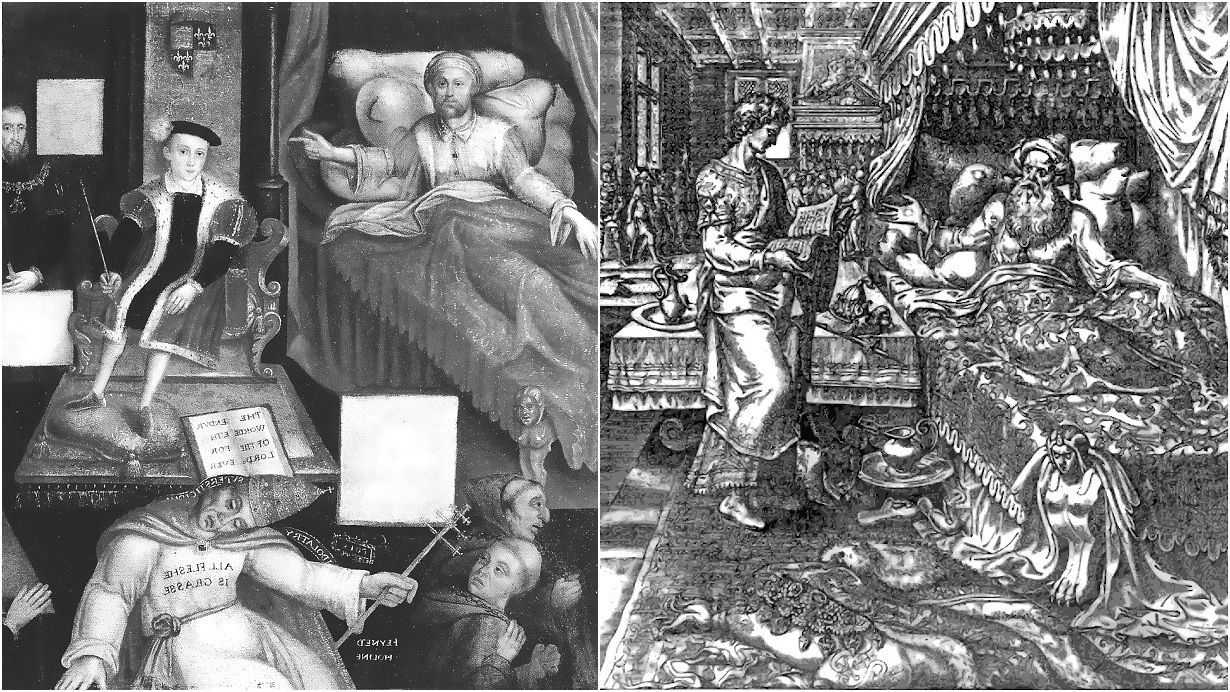
2018-02-18, update: 2022-09-05

